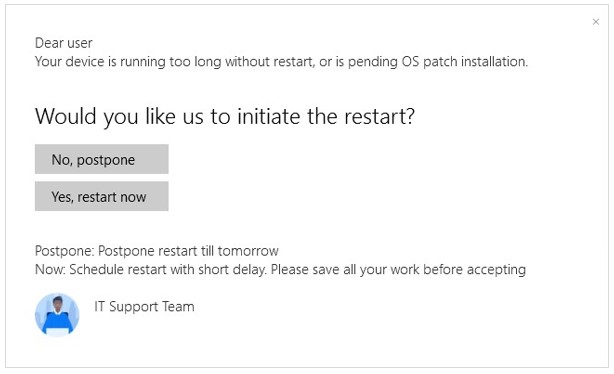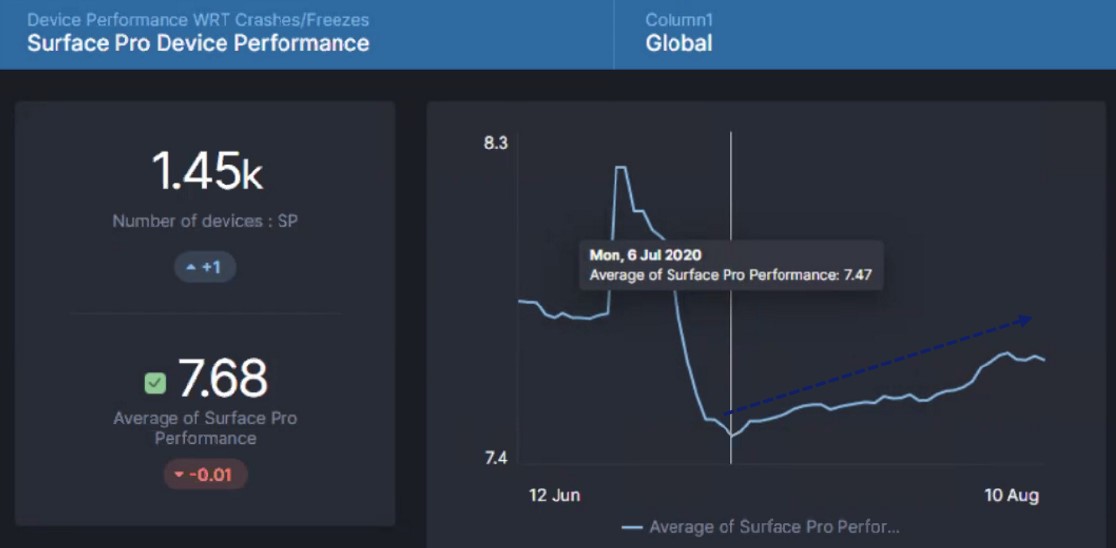How IT & Employees Can Work Better Together | Engagement & Automation
When employees are faced with a tedious IT ticket process—especially for non-critical issues—most would rather suffer in silence. In fact, an independent survey recently uncovered that only 55% of employee incidents are actually reported to IT. This silence can create significant challenges for IT, in terms of the effect on employees (frustration and productivity losses) and outcomes for IT (poor employee perception of IT, increased risk of project failures, reactive problem solving and more).
This is where ongoing and proactive management of employee experience can make a real difference. A focus on experience can help IT deliver more effective incident management by allowing them to detect and resolve hidden issues, without waiting on employees to report them.
Let’s look at one specific aspect of proactive IT management: automated self-help. That is, getting employees involved in the remediation process using targeted engagement and automated healing.
The power of analytics + sentiment + automation
Imagine you experience an IT issue. But before you consider whether or not to contact IT, a message pops up on your device letting you know that IT is aware of the problem and better still—you are prompted to resolve the issue with one simple click. Invisible to you as an employee, an automated remote action is deployed to fix the issue instantly, requiring no IT involvement.
Now imagine this same scenario performed at scale, across the entire enterprise.
Nexthink customers are making this a reality through the synergy of three key capabilities:
- Real-time, event-level visibility and analytics to identify the source of experience degradation.
- A hyper-targeted employee engagement channel to reach out to the right people, at the right time, with the right message.
- Automated remediation at scale to seamlessly resolve IT issues quickly and effectively.
Each of those features has immense value on its own. But when combined, these capabilities become a powerful weapon for IT. And the best example of that is automated self-help that proactively resolves issues at scale, while keeping the employee involved and aware.
Here are three recent examples from Nexthink customers.
1) Helping employees to help themselves
Low system free space is often referred to as a silent killer of employee experience as it can create performance issues without employees realizing why. This can quickly escalate to increased ticket count, complex troubleshooting and deteriorating device experience. In addition, low space can lead to software compliance issues as system updates cannot be properly installed.
Well aware of this problem, a global financial company created a custom Nexthink dashboard to monitor the available disk space of every device across their landscape. Whenever a device crossed a defined threshold of 10GB of free space, a targeted engagement campaign—such as the one below—would be deployed to the impacted employee(s).

If the employee accepted, a remote action was deployed in the background to clear the recycle bin and temporary files on the targeted device, without IT intervention. In a matter of days, this self-help campaign cleared up hundreds of GB of disk space and dramatically reduced disk-clean-up tickets across the enterprise.

Considering that it previously took around 15 minutes per device to manually clean each disk, the customer could quickly link the self-help campaign to significant productivity increases across the organization.
2) IT and employees working as a team
This global mining company noticed a sudden drop in its overall DEX Score, attributed to a drop in device performance. A quick analysis showed that over 7,000 devices were experiencing high memory usage. Further investigation revealed some interesting facts: about 50% of those devices had not rebooted in more than 7 days, and 15% had a direct correlation between this lack of reboot and high memory usage. These devices were not receiving critical OS updates, which resulted in performance issues.

To resolve this issue and improve their employees’ device experience, the customer deployed a highly targeted self-help campaign to those employees that were experiencing high memory usage and still needed to reboot their devices. This campaign not only brought the issue to each user’s attention but also allowed the employee to restart the device themselves through an automated action.

Straight away, IT observed that device performance—and the overall DEX Score—increased for over 700 devices. In the past, it took the support team approximately 30 minutes per device to reach out and negotiate with an employee to restart and update their device. The powerful combination of employee engagement and self-help automation instantly saved 350 hours of IT overhead.
3) Prioritizing collaboration in the flexible workplace
In July 2020, a global manufacturing company noticed a sudden MS Teams stability issue, mainly across Surface Pro devices. With remote working having become so critical, this was unacceptable.
IT identified the root cause as a recent update causing MS Teams to start GPU acceleration, resulting in an MS Teams crash.

The customer quickly tailored a custom engagement campaign targeting 324 affected devices which empowered employees to resolve the issue themselves. With the user’s consent, a remote action was triggered to disable MS Teams’ GPU hardware acceleration on the device. Since this required an application restart, IT made sure to give targeted users a 10 minute delay to give them time to close any open documents.

The result?
A 78% reduction in MS Teams crashes across targeted devices, quickly restoring their collaboration and productivity score to acceptable levels.
Proactive management of employee digital experience
Nexthink Engage offers a targeted IT-to-employee engagement channel to gather and correlate sentiment data, as well as communicating key IT information to drive awareness and adoption. Nexthink Act combines powerful custom data retrieval and remediation capabilities, enabling IT teams to proactively solve employee issues in a reliable and automated manner.
Combining the power of Act and Engage allows IT to proactively deploy flexible and scalable automated self-help to resolve issues with minimal effort. Self-help has saved Nexthink customers from significant hours of productivity loss, and it has dramatically reduced their operational costs.
And it also has a softer impact on employee experience, which is just as important. Beyond fixing their issues, self-help keeps employees aware and involved in the IT process, reminding them that IT is there to support them, even at a distance.
Read more about Engagement and Automation success stories in previous blog posts:
Book a demo to find out how you can efficiently deploy self-help automation across your enterprise using Act and Engage from Nexthink.
12 Tips to Help IT Support a Distributed Workforce
Related posts:
- How to Keep Your Digital Devices Current | Engagement & Automation
- How IT Can Enable Smooth Digital Collaboration | Engagement and Automation
- The DEX Show | Podcast #11 – Law and Automation w/ Slater & Gordon
- How a company saved 32k hours of IT support and $1.6M on their Windows Migration